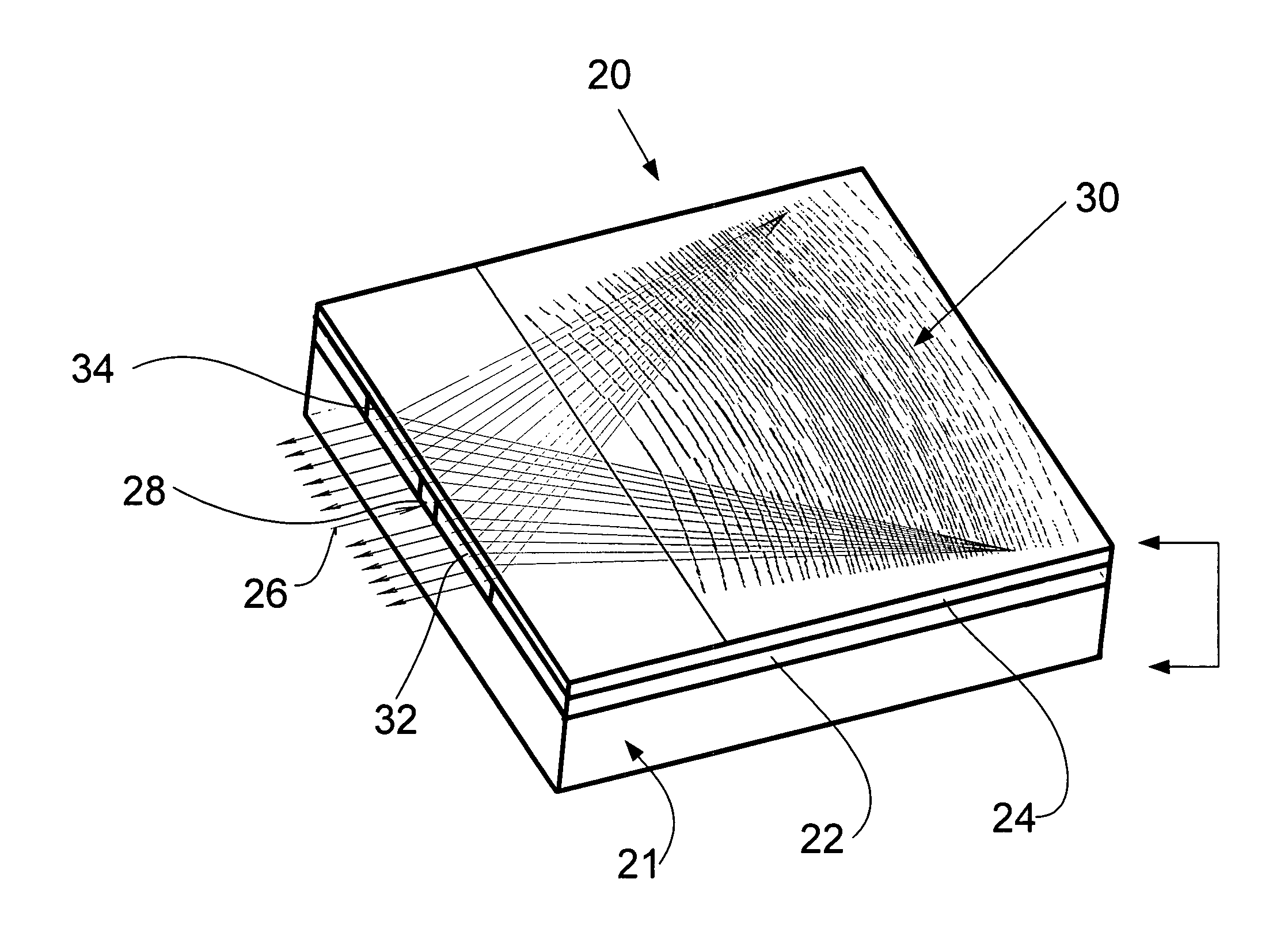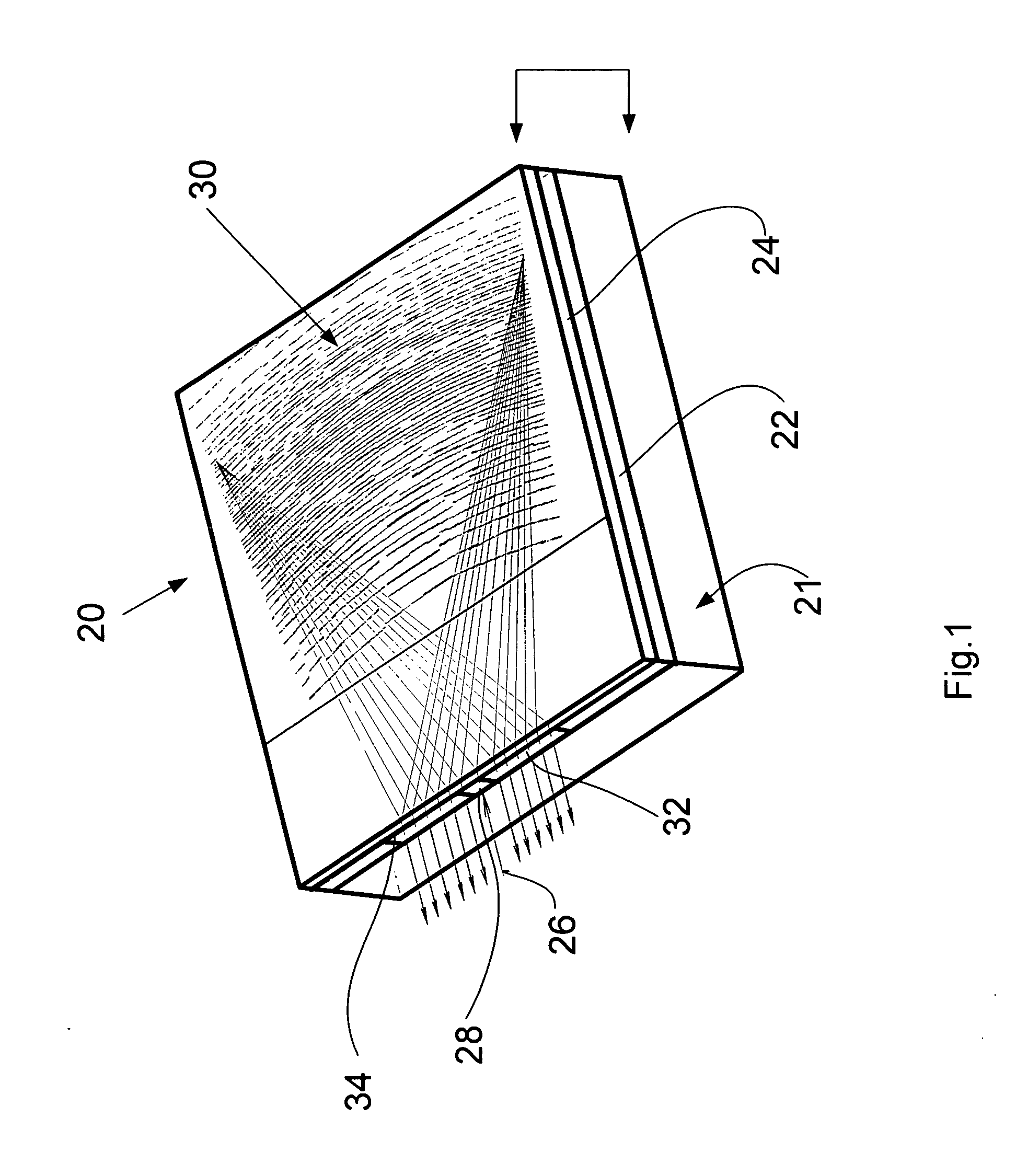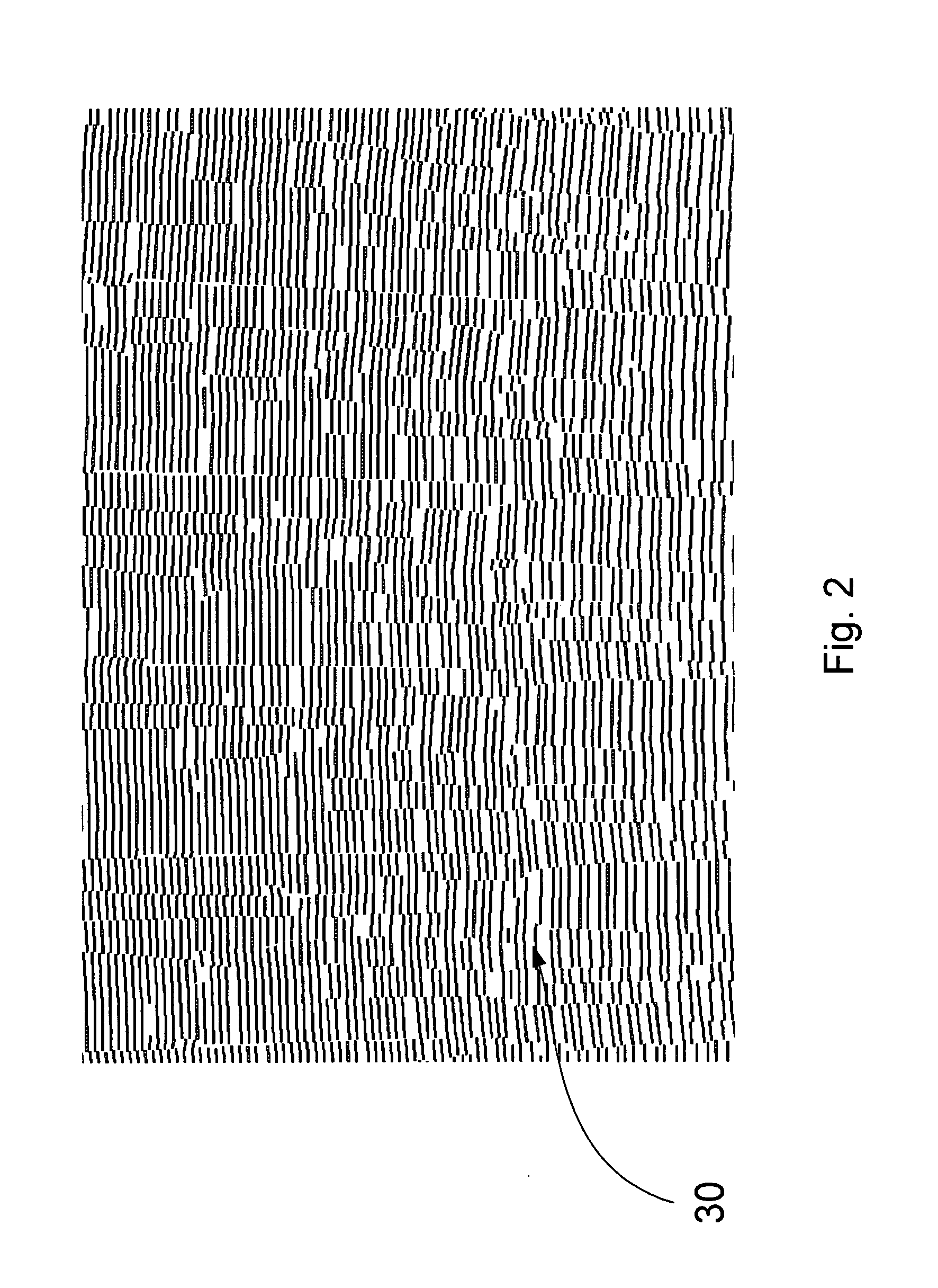Optical integrated nanospectrometer and method of manufacturing thereof
a nano-spectrometer and optical chip technology, applied in the field of optical spectrometry, can solve the problems of increasing intrinsic losses, unable to extend this type of optical chip to a large number of channels, and unable to achieve the effect of suppressing crosstalk
- Summary
- Abstract
- Description
- Claims
- Application Information
AI Technical Summary
Benefits of technology
Problems solved by technology
Method used
Image
Examples
Embodiment Construction
[0039]In the context of the present invention, the term “super-grating” means a digital planar hologram that performs multiple functions and operates for a plurality of channels incorporated into a nanospectrometer.
[0040]In the context of the present invention, the term “sub-grating” means a virtual component of the aforementioned digital planar hologram that provides operation of a single light-signal-transmitting channel. The same elements of different sub-gratings belong to the same super-grating.
[0041]The physics of a spectral super-grating, deployed in the invented spectrometers, is complicated, and for this reason several theoretical models should be used to explain the properties of transfer function. In a first approximation, the super-grating works like a superposition of elliptical sub-gratings, each of which connects an input port with one of multiple output ports. The sub-gratings are structures that are composed of multiple nano-features that modulate the refractive ind...
PUM
| Property | Measurement | Unit |
|---|---|---|
| volume | aaaaa | aaaaa |
| wavelength | aaaaa | aaaaa |
| depth | aaaaa | aaaaa |
Abstract
Description
Claims
Application Information
 Login to View More
Login to View More - R&D
- Intellectual Property
- Life Sciences
- Materials
- Tech Scout
- Unparalleled Data Quality
- Higher Quality Content
- 60% Fewer Hallucinations
Browse by: Latest US Patents, China's latest patents, Technical Efficacy Thesaurus, Application Domain, Technology Topic, Popular Technical Reports.
© 2025 PatSnap. All rights reserved.Legal|Privacy policy|Modern Slavery Act Transparency Statement|Sitemap|About US| Contact US: help@patsnap.com



